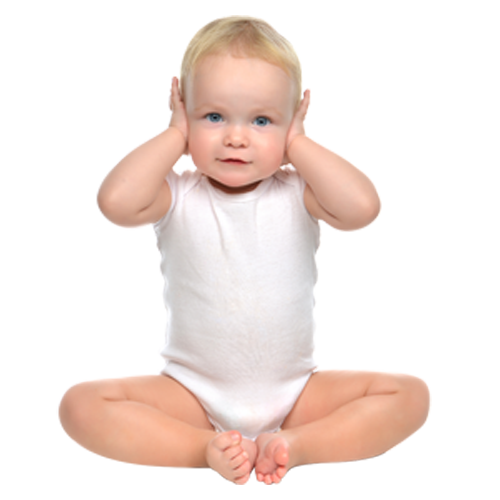Otitis is a well-known infection, especially because it is very common. Did you know that there are different types of otitis and that they are treated differently? By learning to distinguish between them, you will be better equipped to get your child back on track.
Anatomy of the ear
The ear consists of three parts, each playing an important role in hearing:
- outer ear
- middle ear
- inner ear
The ear canal runs from the outer ear to a membrane called the eardrum. This canal and the visible part of the ear form the outer ear, which collects sound.
Once sound is transmitted to the eardrum, it vibrates and transmits this vibration to a cavity, which is actually the middle ear. The middle ear is also connected to the back of the mouth and nasal cavities by a tube called the "eustachian tube", which helps to balance the pressure in the middle ear.
The inner ear is the part of the ear that transmits auditory information to the brain. The inner ear is also responsible for balance.
Types of otitis (ear infections)
An otitis is actually an inflammation of part of the ear most often caused by bacteria or a virus. There are two main types of ear infections.
Otitis externa, more commonly known as swimmer's ear, affects the ear canal. It gets its name from the fact that it is often caused by excessive moisture in the outer ear, which sometimes occurs after swimming. This moisture promotes the growth of bacteria.
Otitis media, on the other hand, affects the cavity behind the eardrum (middle ear) and is often caused by a virus or bacteria that travels to the middle ear through the eustachian tube, especially after a cold.
Signs and symptoms
The main symptom of otitis is pain, whether it is otitis externa or otitis media. If it is otitis externa, the pain may increase when the earlobe is pulled, which is generally not the case for otitis media.
In young children, the pain can be expressed in these different signs, the child:
- frequently pulls on the ear
- is irritable and cries more easily than usual
- lacks appetite
- doesn’t sleep as well as usual
Furthermore, an ear infection can lead to the following symptoms:
- feeling of having a blocked ear
- ear discharge
- changes in hearing
- fever (especially with otitis media)
Risk factors
For risk factors for otitis externa, read the following fact sheet: Swimmer's ear: prevention and treatment.
Otitis media mainly affects young children. Their eustachian tube is narrower and more horizontal, which promotes the accumulation of secretions and the growth of bacteria in the middle ear. As children grow, the anatomy of the eustachian tube changes, decreasing the risk of developing otitis media.
Because of a hereditary predisposition or particularities, some children may be more prone to ear infections. For instance, this may be the case for children who:
- are born prematurely
- have some type of allergy
- were not breastfed
- attend daycare
- are exposed to second-hand smoke
It should be noted that, although children are at greater risk, adults can also suffer from ear infections.
Treatment and prevention
Treatment of otitis varies depending on the part of the ear affected. Otitis externa can usually be treated with drops (e.g., antibiotics). For additional information about the prevention and treatment of this type of ear infection, read the following fact sheet: Swimmer's ear: prevention and treatment.
Unfortunately, otitis media cannot be treated with drops, as the eardrum acts as a barrier that prevents the drops from reaching their target. Therefore, antibiotics must be taken by mouth.
An antibiotic is not always given right away since an ear infection often resolves itself within a few days. For example, if your child is older than six months and has mild symptoms, your doctor may recommend careful observation rather than immediate treatment. If an antibiotic is prescribed, follow the advice of your pharmacist regarding dosage, frequency of use, and special storage precautions.
In all cases, using pain medication, such as acetaminophen or ibuprofen to relieve pain and/or fever, is indicated. Your pharmacist can help you calculate the dose of medication to be given to your child according to their age and weight in order to provide effective relief, as well as provide information on the frequency of administration. It is best to consult your pharmacist about dosage rather than simply following the manufacturer's recommendations on the product label.
Complications
Contrary to popular belief, an ear infection rarely leads to serious complications. However, when an ear infection persists for a long period of time or when the infection recurs repeatedly, hearing problems may occur.
In such cases, other treatments may sometimes be considered. For instance, transtympanic tubes are often used in cases of recurrent ear infections. This type of tube, which passes through the eardrum, allows fluid to flow out of the middle ear and reduces the risk of infection.
In all cases, if you suspect that your child has as an ear infection, see a healthcare professional. A thorough assessment is required to determine the appropriate treatment.
Speak to your pharmacist for additional information about ear infections and their treatment.

